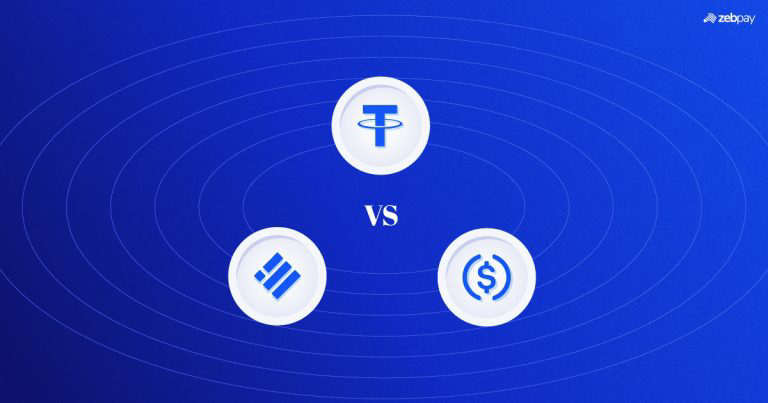Introduction:
In the world of cryptocurrency, stablecoins have emerged as a reliable solution to address the issue of price volatility inherent in most digital assets like Bitcoin and Ethereum. Stablecoins are cryptocurrencies pegged to stable assets, such as fiat currencies like the US Dollar, to maintain a steady value. Among the numerous stablecoins available, Tether (USDT), Binance USD (BUSD), and USD Coin (USDC) have gained significant popularity. In this article, we will conduct a comparative analysis of these three stablecoins, exploring their key features, underlying technologies, and use cases.
1. Tether (USDT):
Tether (USDT) is one of the earliest and most well-known stablecoins in the crypto market. Launched in 2014, it is pegged to the US Dollar and operates on several blockchains, including Ethereum (ERC-20), Tron (TRC-20), and Omni (Bitcoin-based). USDT is issued and managed by Tether Limited, a company that claims to hold an equivalent amount of USD reserves to back each USDT in circulation. However, concerns have arisen over the lack of transparency and audits, leading to debates over the extent of the USDT's backing.
USDT has garnered widespread adoption due to its extensive availability and its use as a primary trading pair on many cryptocurrency exchanges. It serves as a popular choice for traders looking to hedge their positions during periods of high market volatility.
2. Binance USD (BUSD):
Binance USD (BUSD) is a stablecoin launched by Binance, one of the world's largest cryptocurrency exchanges. Launched in collaboration with Paxos Trust Company, BUSD is pegged 1:1 to the US Dollar and operates on the Binance Chain (BEP-2) and the Ethereum blockchain (ERC-20). BUSD stands out for its regulatory compliance and transparency, as it undergoes regular audits to ensure that each token is fully backed by USD reserves held in FDIC-insured U.S. banks.
BUSD is designed to facilitate seamless transactions and foster adoption across the Binance ecosystem. It serves as an essential component in the Binance Smart Chain (BSC) DeFi ecosystem, enabling users to engage in various DeFi activities with a stable asset.
3. USD Coin (USDC):
USD Coin (USDC) is a stablecoin launched by Circle and Coinbase, two reputable companies in the cryptocurrency industry. Launched in 2018, USDC is built on the Ethereum blockchain (ERC-20), with plans for expansion onto other blockchain networks. Similar to BUSD, USDC is audited regularly by top accounting firms to ensure a 1:1 peg to the US Dollar, providing transparency and confidence to its users.
USDC has gained popularity in the decentralized finance (DeFi) space due to its widespread integration across various DeFi protocols. It is used for lending, borrowing, yield farming, and trading on decentralized exchanges, contributing significantly to the growth of DeFi.
Comparison:
1. Transparency and Auditing:
- USDT: The lack of regular and transparent audits has been a point of contention for USDT, leading to questions about the actual USD reserves backing each token.
- BUSD: BUSD stands out in terms of transparency and regulatory compliance, with regular audits conducted by a trusted third party.
- USDC: Like BUSD, USDC undergoes frequent audits, providing users with assurance that each token is backed by equivalent USD reserves.
2. Supported Blockchains:
- USDT: USDT is available on multiple blockchains, including Ethereum, Tron, and Omni, increasing its accessibility and usability.
- BUSD: BUSD primarily operates on the Binance Chain and Ethereum, making it a popular choice within the Binance ecosystem.
- USDC: USDC is initially built on the Ethereum blockchain, with plans for expansion onto other networks in the future.
3. DeFi Integration:
- USDT: While USDT is widely used as a trading pair and a store of value, it is less prevalent in decentralized finance compared to USDC and BUSD.
- BUSD: BUSD plays a significant role in the Binance Smart Chain (BSC) DeFi ecosystem and is extensively used for various DeFi activities.
- USDC: USDC has gained substantial traction within the DeFi space, with its integration across various protocols facilitating DeFi liquidity and lending.
Conclusion:
In summary, stablecoins have become a vital component of the cryptocurrency market, providing stability and liquidity to traders and users. Tether (USDT), Binance USD (BUSD), and USD Coin (USDC) are three of the most prominent stablecoins, each with its unique features and use cases.
USDT, as one of the earliest stablecoins, has widespread adoption but faces criticism over transparency and auditing practices. BUSD, backed by the reputable Binance exchange and Paxos Trust Company, stands out for its regulatory compliance and is gaining traction in the Binance Smart Chain DeFi ecosystem. USDC, backed by Circle and Coinbase, has emerged as a strong player in the DeFi space, providing transparency and ease of use in various DeFi applications.
Ultimately, the choice between these stablecoins depends on individual preferences, use cases, and the level of confidence one seeks in a stable asset. As the cryptocurrency market evolves, stablecoins will continue to play a critical role in facilitating seamless transactions and fostering wider adoption across the blockchain industry.

